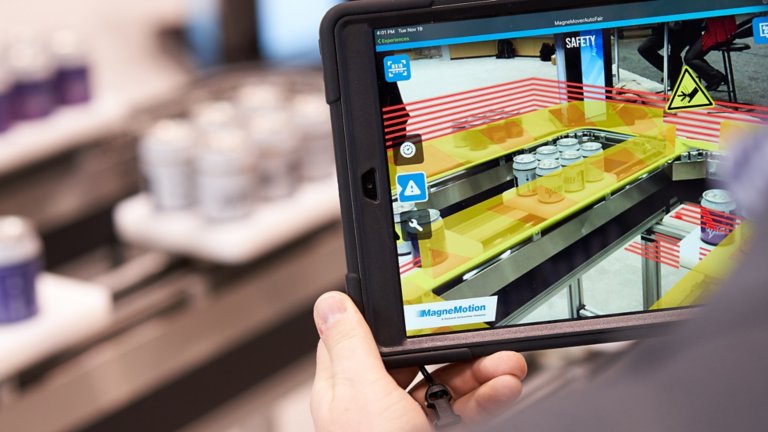For automated material handling and logistics applications, the past couple of years have shown more than ever that reliable wireless communications are a must for busy facilities teeming with moving equipment. The high demand of nearly every type of consumer good during the pandemic has not eased. Meanwhile, “the Amazon effect” means that most consumers expect items as soon as possible after checking out of an online shop. These factors have meant that items must move through material handling and logistics facilities as quickly as possible – and reliable connectivity is how many companies are ensuring this quick movement.
Wireless connectivity has had increased adoption in these cases due to the ease with which the network can be expanded as more equipment – such as automated guided vehicles (AGVs) – is added. Wireless technology can also enable reliable communications for logistics mainstays such as automated storage and retrieval systems and conveyance systems.
The 5G Option
5G has been a hot topic now for a while. But its usage in facilities has a complicated outlook. To explore 5G as it relates to industrial use, it’s important to consider two separate factors – the technology and real-world adoption of it.
5G’s features are promising and interesting – that’s why the marketing of it a couple of years ago was so well received. However, the adoption of 5G has been another story. 5G functionality essentially has three phases of release:
- Large-scale mobile public communications, which we have seen make smart phones faster as users upgrade from 4G, depending on their geographic location
- Massive, machine-type public/private communication
- Ultra-reliable low latency private communication
The last two phases listed are those that would be of interest to automated material handling and logistics facilities, which require low latency especially for applications involving the CIP Safety protocol or moving equipment. The reality that we have seen is that the connectivity devices that are needed for these types of applications are scarce, and more costly – typically 5 to 10 times more expensive than those used in 4G industrial applications. Based on current market predictions, the chips’ scarcity and cost may be a factor for a while, with higher supply and less expensive chips expected toward the end of 2023 or beginning of 2024.
Wi-Fi 6 Emerges as a Powerful Update
So 5G isn’t a cost-effective, relatively accessible option for industrial use at the moment. However, Wi-Fi remains a reliable communications avenue for automated material handling applications – and its latest version, Wi-Fi 6, has advantages for industrial applications. Wi-Fi 6 chips are similar in price range to those used by Wi-Fi 5 devices, and supply isn’t an issue as much as it is with 5G chips.
The addition Wi-Fi 6E features a 6 GHz frequency band that supports up to 60 channels, a major Wi-Fi update. Currently only 3 channels in the 2 GHz band and 9 out of 25 in the 5 GHz band are suitable for mission-critical communication. This represents a major advantage for material handling applications since it increases the capacity by a factor of 5 for how much data can be communicated.
Wi-Fi in general has sometimes in the past been seen as an underdog, with some associating it more with home Internet than seeing it as a powerful networking technology. The fact is, Wi-Fi is proven, reliable, and can support various industrial applications.
In setup and management aspects, Wi-Fi is a great alternative to 5G for now.
One involves the availability of outside support. Since wireless technology is a shared medium – unlike the 1-to-1 connection that its cable alternatives have – most facilities will must fine-tune their wireless application. There’s a wide variety in the market for Wi-Fi connectivity, and a lot of wireless support, such as the Rockwell Automation Network and Security Services. Customers will find that the support ecosystem is limited when it comes to 5G or even 4G.
Another aspect to consider is frequency access. Wi-Fi relies on public frequencies that are available globally, with basic guidelines such as not dominating frequency access and not interfering on a channel that’s in use already. Conversely 5G mostly uses licensed frequencies, which differ depending on the country, but offer more control. For example, you can give priority to your facility’s safety, then medium-priority applications, and so on. However, this option may have higher support needs.
I tend to compare the two this way: Wi-Fi is relatively inexpensive but stays fair (while maintaining reliability); whereas 5G is like an exclusive club – it’s expensive, but you’re able to tune in to your own private channels.
Both of these options provide the reliable wireless connectivity that automated material handling applications need. While 5G shows promise for future applications, connectivity device scarcity and high cost make Wi-Fi 6 a fantastic option for industrial wireless connectivity now and in the future.



